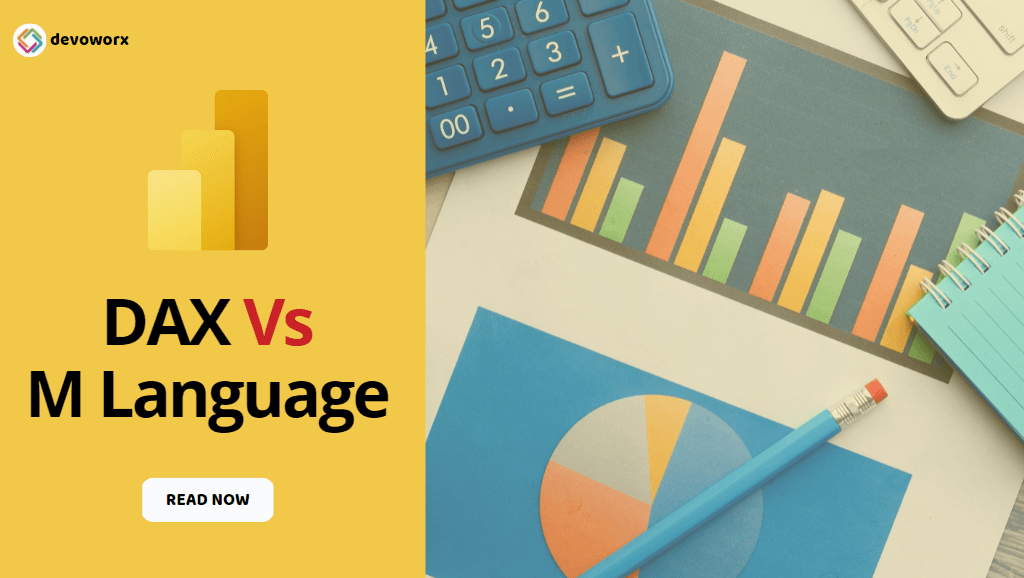DAX (Data Analysis Expressions) and M are two programming languages used in Power BI for data modelling, calculations, and transformation. While both languages are used in Power BI, they serve different purposes and have different syntaxes and functions. In this article, we will explore the differences between DAX and M and their use cases.
DAX Language:
DAX is a formula language used for data modelling and analysis in Power BI. It is like Excel formulas but with additional functions and features. DAX expressions are used to create measures, calculated columns, and calculated tables in Power BI.
Some key features of DAX include:
Functions: DAX has over 200 built-in functions for data analysis, including aggregation functions (SUM, AVERAGE, COUNT), time intelligence functions (YEAR, QUARTER, MONTH), and statistical functions (VAR, STDEV, MIN, MAX).
Context: DAX uses context to determine the calculation or aggregation of data based on the filter and row context of the data model.
Relationships: DAX relies on relationships between tables to perform calculations and aggregations across multiple tables.
Expressions: DAX expressions are written in a formula bar and can include mathematical operations, logical operators, and comparison operators.
M Language:
M is a functional programming language used for data transformation and cleaning in Power BI. It is used to create queries that extract, transform, and load data from different data sources into Power BI.
Some key features of M include:
Queries: M is used to create queries that extract data from various data sources, transform and clean the data, and load it into Power BI.
Functions: M has built-in functions for data transformation, such as filtering, sorting, merging, and pivoting.
Data Types: M supports a variety of data types, including text, numbers, dates, and arrays.
Variables: M supports variables that can store values and expressions for use in queries.
Differences between DAX and M:
Purpose: DAX is used for data modelling and analysis, while M is used for data transformation and cleaning.
Syntax: DAX expressions are written in a formula bar, while M queries are written in the Power Query Editor.
Functions: DAX has over 200 built-in functions for data analysis, while M has built-in functions for data transformation.
Context: DAX uses context to perform calculations and aggregations based on the filter and row context of the data model, while M does not rely on context.
Relationships: DAX relies on relationships between tables to perform calculations and aggregations across multiple tables, while M is used to transform and clean data within a single table.
Conclusion:
DAX and M are two programming languages used in Power BI for data modelling, calculations, and transformation. While both languages are important for different aspects of data analysis, they have different syntaxes, functions, and use cases. By understanding the differences between DAX and M, you can choose the right language for your data analysis needs in Power BI.




